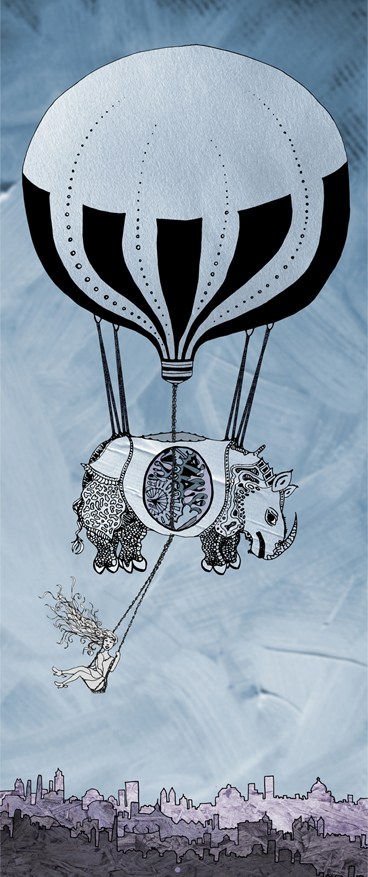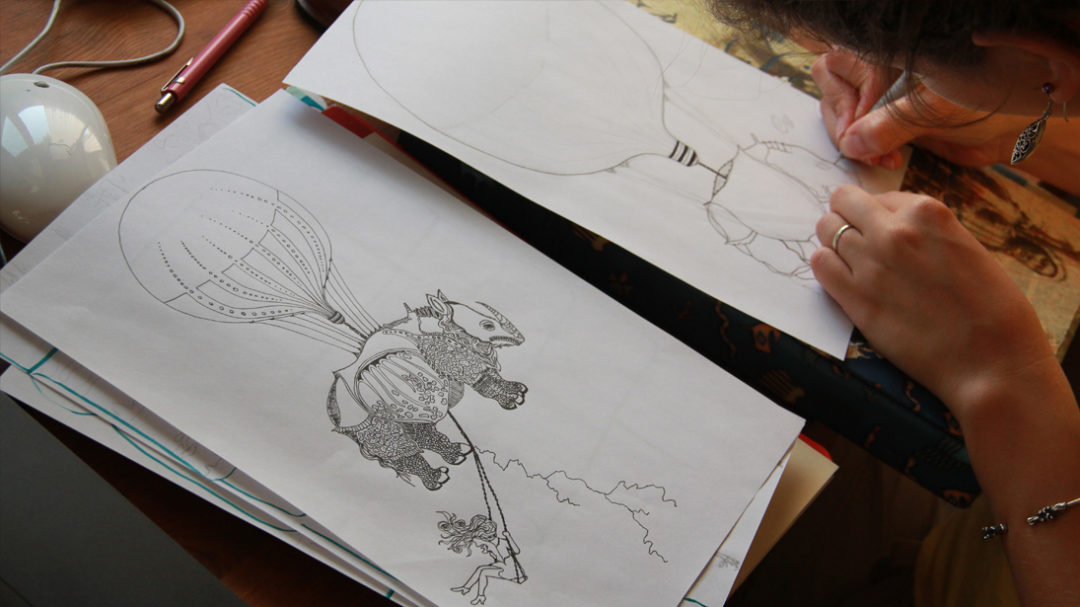 In 2014, with co-director Andrea Kocsis, we have made our new animation film “Storm”, produced by Filmtett Workshop. Although making films on workshops can be really challenging and circumstances were far from optimal, this Hungarian-Romanian co-production short was our most succesful film for quite a while.
In 2014, with co-director Andrea Kocsis, we have made our new animation film “Storm”, produced by Filmtett Workshop. Although making films on workshops can be really challenging and circumstances were far from optimal, this Hungarian-Romanian co-production short was our most succesful film for quite a while.
The basic concept of Storm was written by Alexandra Kocsis, who also drew the first concept arts. From them, the story arc was easily constructed. We’ve designed a strange love story about a balloon-mounted rhinoceros in just 3 minutes, without any words spoken. The main characters evolved a lot during the concept phase. The protagonist rhinoceros were, for example, hollowed out, as we’ve designed a steampunk interiour with pumps, wheels and pistons. It also received large, expressive eyes and ears. The original drawing strongly resembled Dürer’s rhinoceros, but the end result was much more unique and lovable.
 After the characters reached their final forms, we drew the storyboard, which outlined all the necessary takes. We have also made a moving animatics to let dramaturgy crystallize and prevent unnecessary work. We have already decided in the concept phase that Storm would be made by hand, drawn with felt pen, then scanned and digitally composited to build upon the visual tradition of papercut animation. According to the director’s concept, each element received a texture of a different type of paper. The heroes had the texture of a fine drawing sheet, the rhino got a rough-crumpled cardboard, and the city had the texture of an OSB board.
After the characters reached their final forms, we drew the storyboard, which outlined all the necessary takes. We have also made a moving animatics to let dramaturgy crystallize and prevent unnecessary work. We have already decided in the concept phase that Storm would be made by hand, drawn with felt pen, then scanned and digitally composited to build upon the visual tradition of papercut animation. According to the director’s concept, each element received a texture of a different type of paper. The heroes had the texture of a fine drawing sheet, the rhino got a rough-crumpled cardboard, and the city had the texture of an OSB board.
We did not even animate for a second when the finished composite concept already showed all the textures, shapes and colors of the final film. As for the colors, we chose a cold, blue to purple scale. Although every movement was digitally made, the textures were all made of real materials. For example, Szandi drew a huge oil paint backdrop, which was then photographed.
The papercut style not only gave a uniform, distinctive shape to the film, but also significantly simplified our task. Since the time and budget would not have allowed too detailed phases of movemement, we saved a lot of time with the use of paper layers, which we could devote to extending the story and designing further takes.


You must be logged in to post a comment.